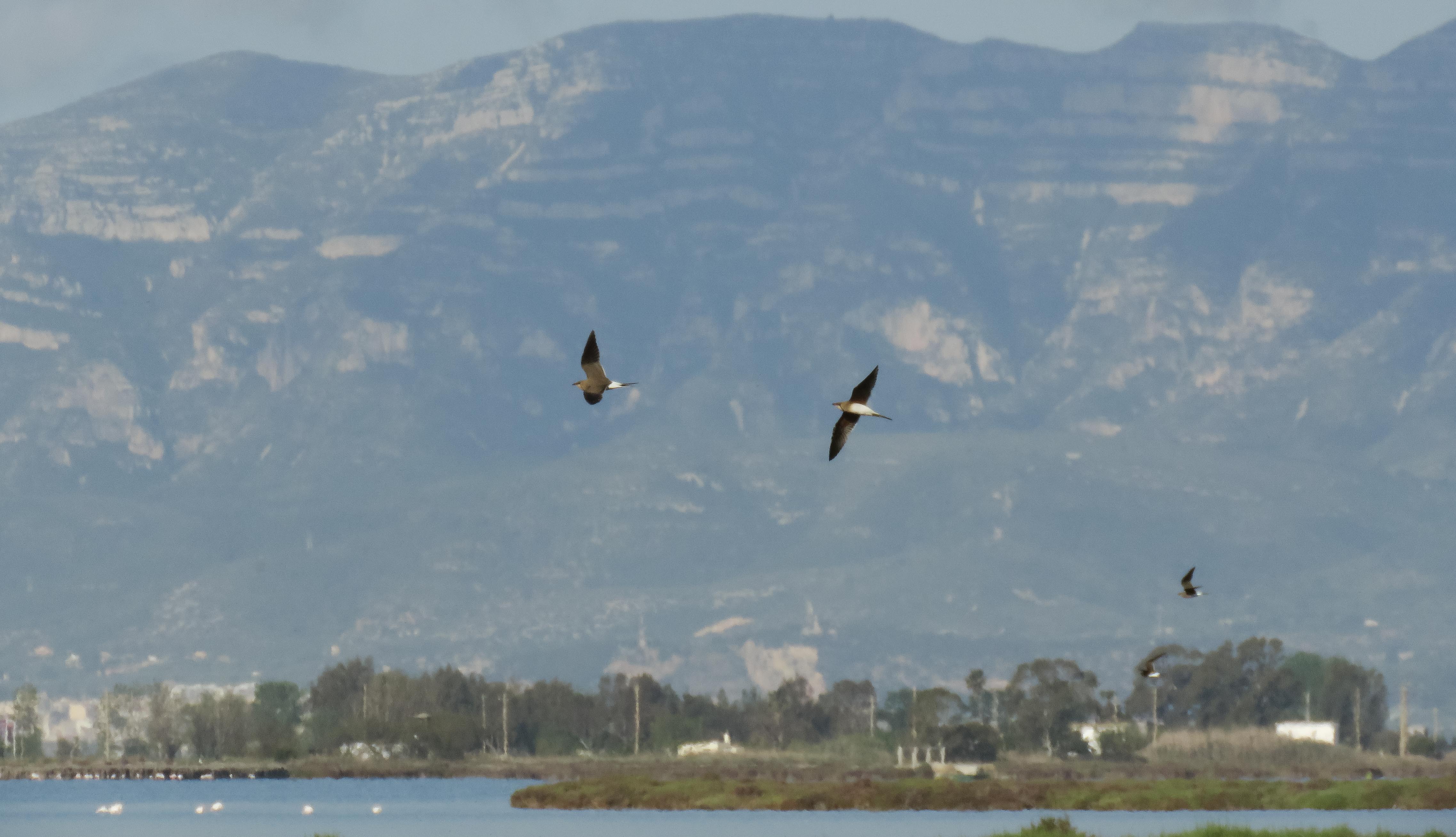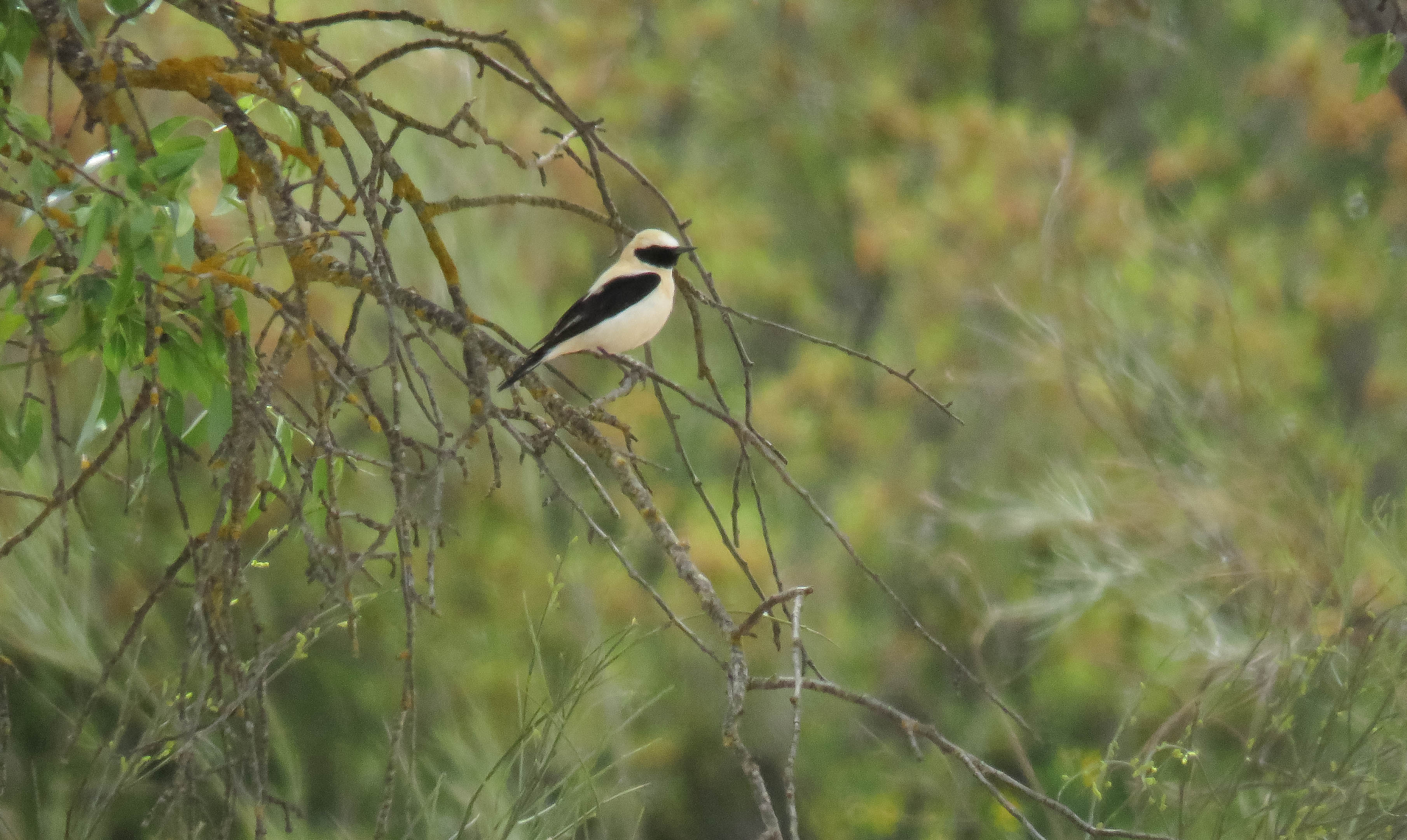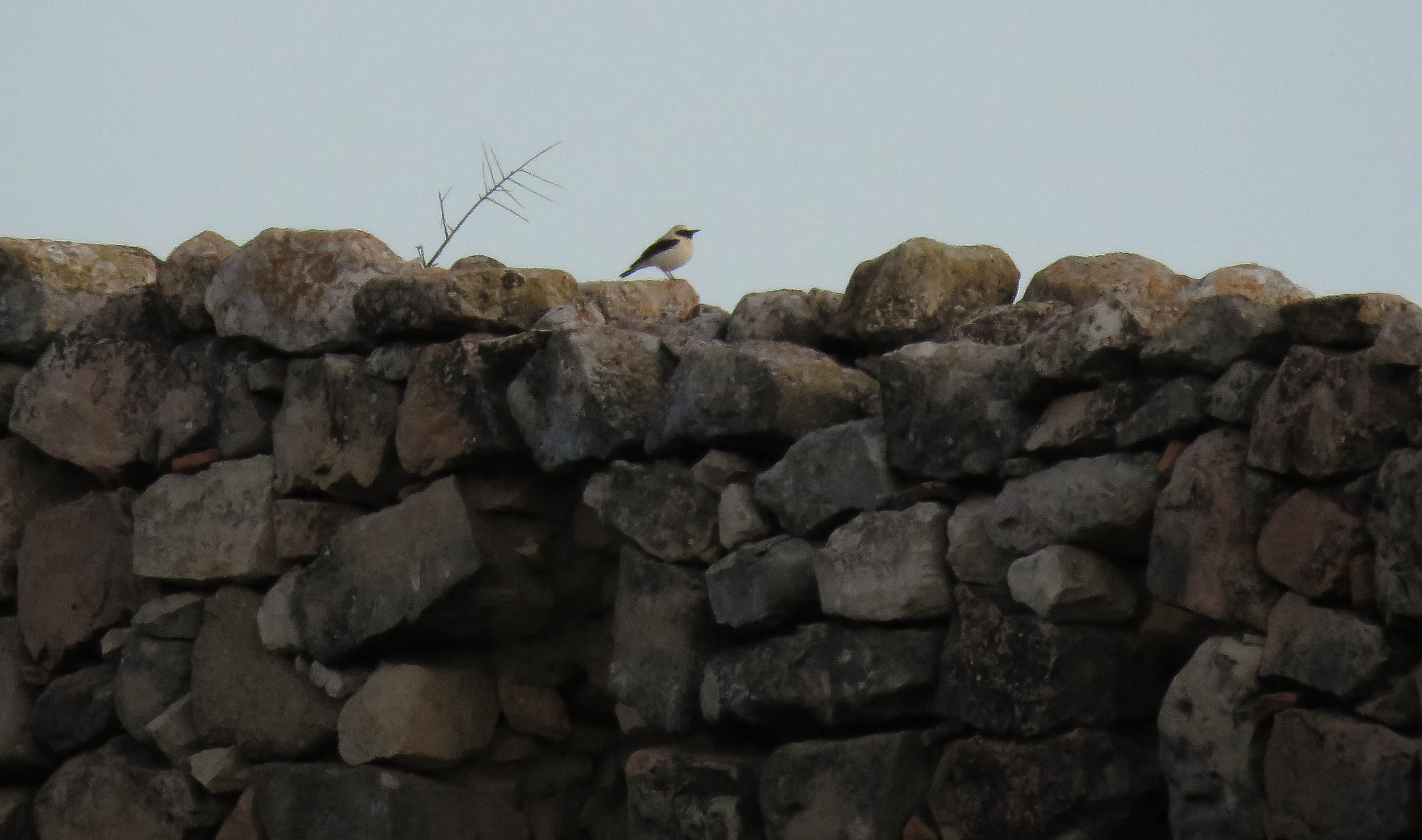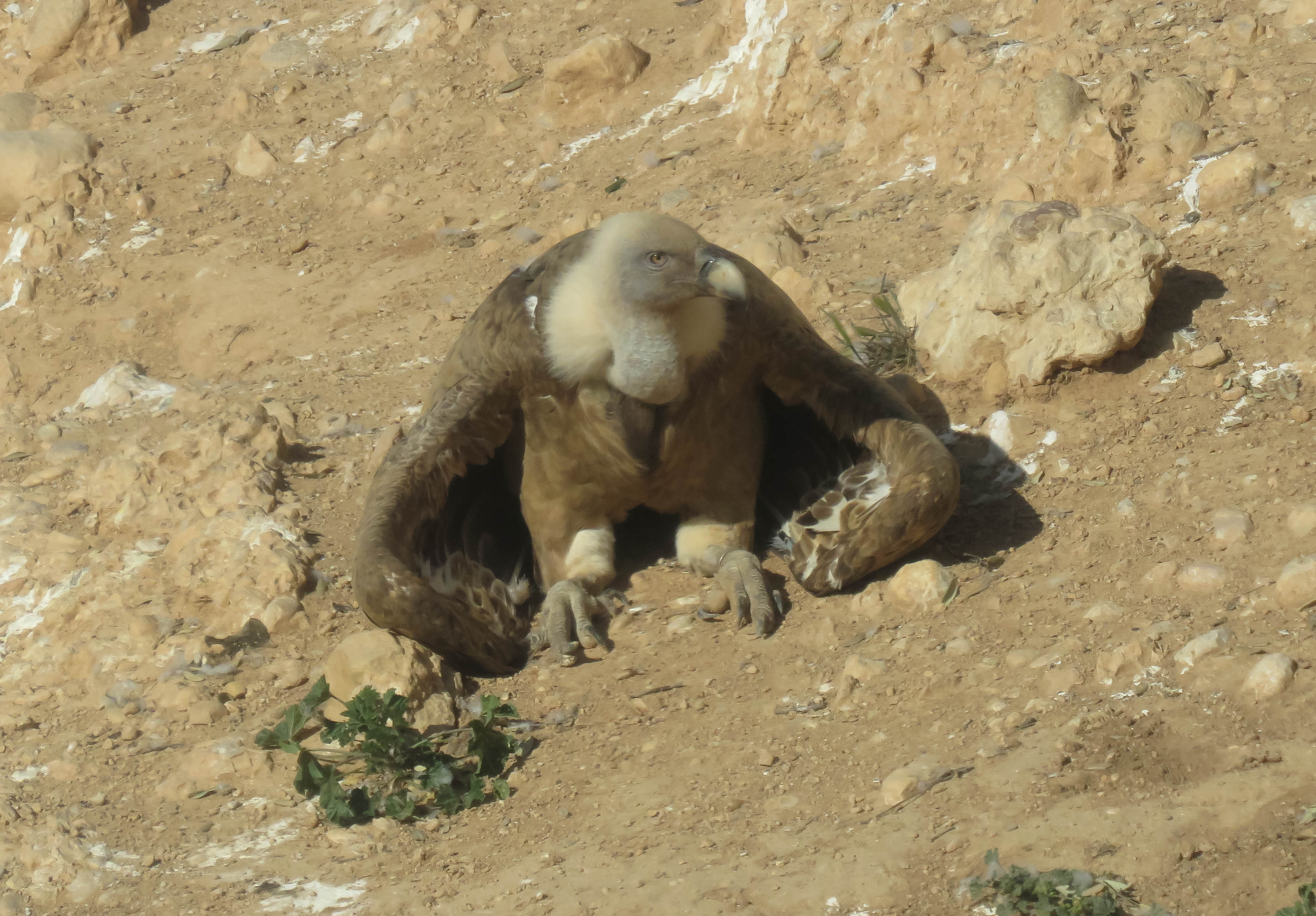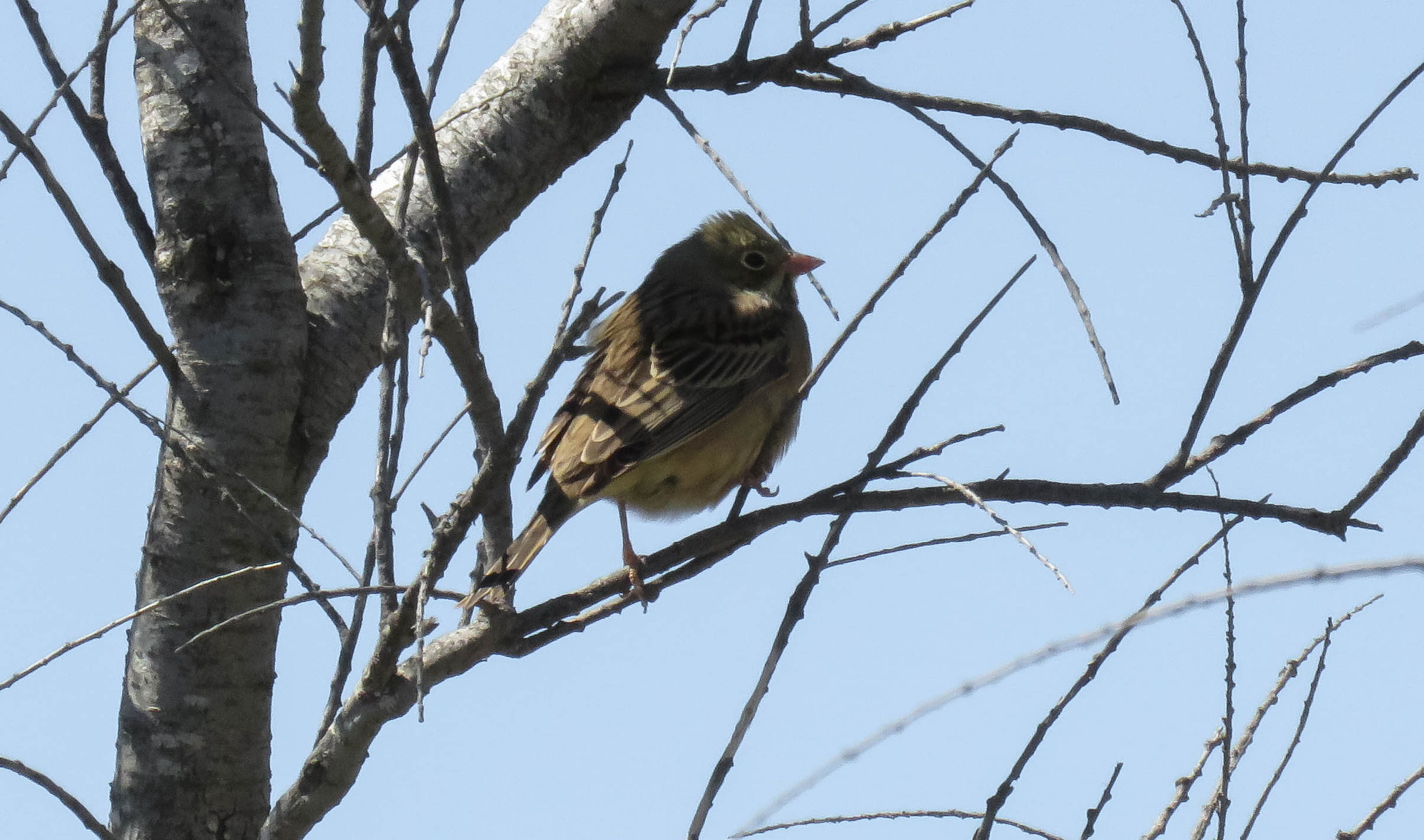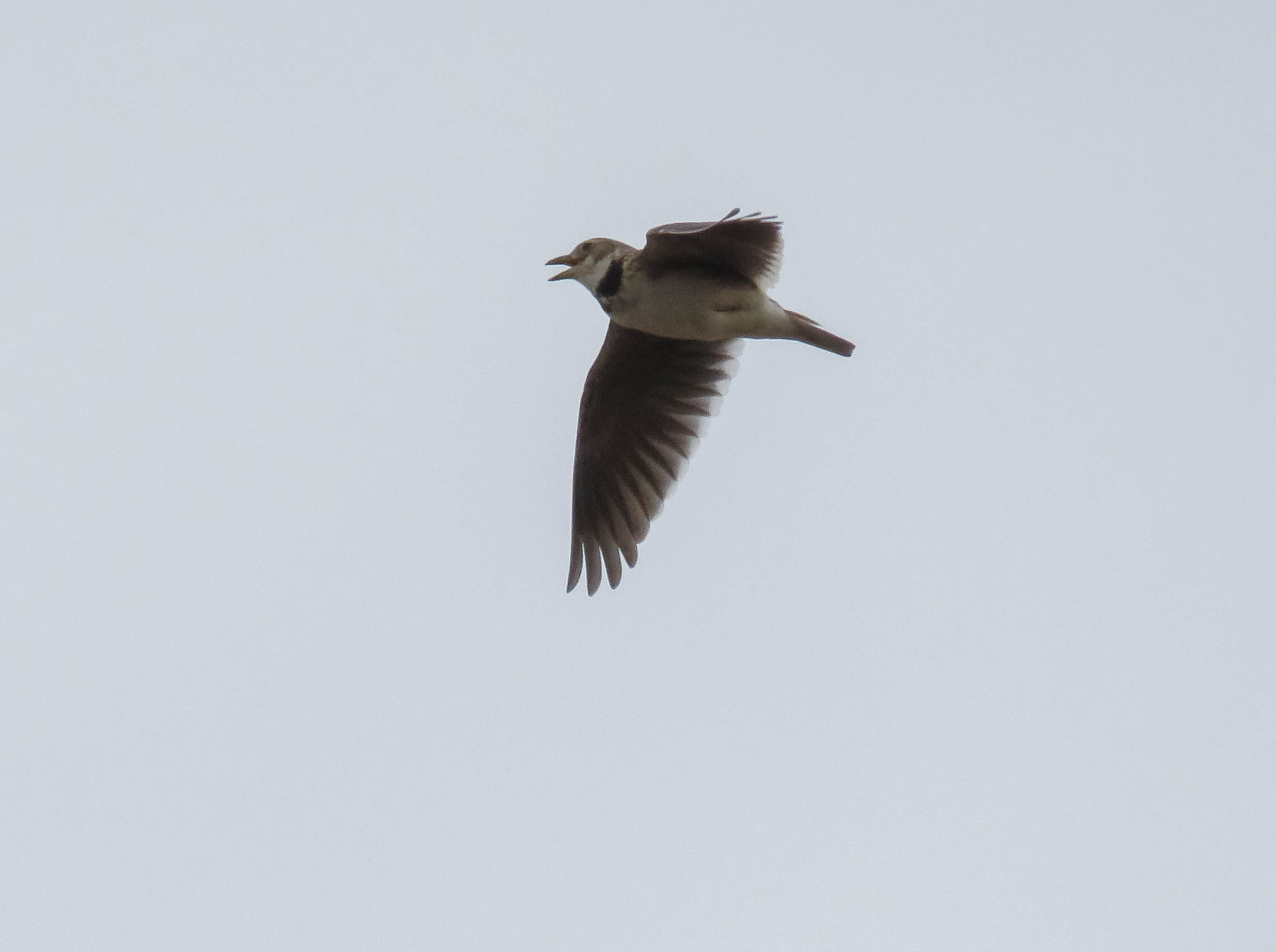Delta de l’Ebre, Spain.
Lauren Evans
During the last week of April, Dante and I visited Delta de l’Ebre, Catalonia, Spain. The vast majority of the Delta is dedicated to intensive rice agriculture, where the fields are flooded in late April/early May via numerous irrigation canals which feed off the Ebro river. There are also vast areas of wetland supporting huge numbers of birds, whilst the Delta’s geographical position, stretching into the Mediterranean Sea, make it an excellent place for migration. Dante had briefly visited the Delta twice before whereas it was my first time birding in Spain. We had a brilliant week and I ended up with 48 new species for the trip and Dante had a respectable 12.

Black-winged Stilt, Black-crowned Night Heron & Turtle Dove.
20th April. Arrival in Deltebre and El Violí.
An easy, morning flight from Manchester to Barcelona, we picked up the hire car and after a rather tense drive south (it was my first time driving on the other side of the road), we arrived at our apartment in Deltebre. Our first evening was spent at El Violí and it was sensational. Thousands of Swallows and Sand Martins were swirling over the pools, feeding amongst 500+ Whiskered Terns, 500+ Greater Flamingos, ~50 Wood Sandpipers, Glossy Ibises, Purple Herons, Great White and Little Egrets. There were so many new calls and we had excellent views of singing Great Reed Warblers, Zitting Cisticolas, Crested Larks and Penduline Tits. A Red-throated Pipit had been reported somewhere in the area earlier that day and we came across 4 males on the path right by the car within 2 minutes of arriving. Towards sunset, an adult male Little Bittern flew across a pool and was visible hunting in the reeds whilst ~25 Black-crowned Night Herons flew from their day roosts right past the observation tower. There was a mind-blowing amount of birds visible and calling, and in our first 2.5 hours in the Delta I’d already seen 16 new species!



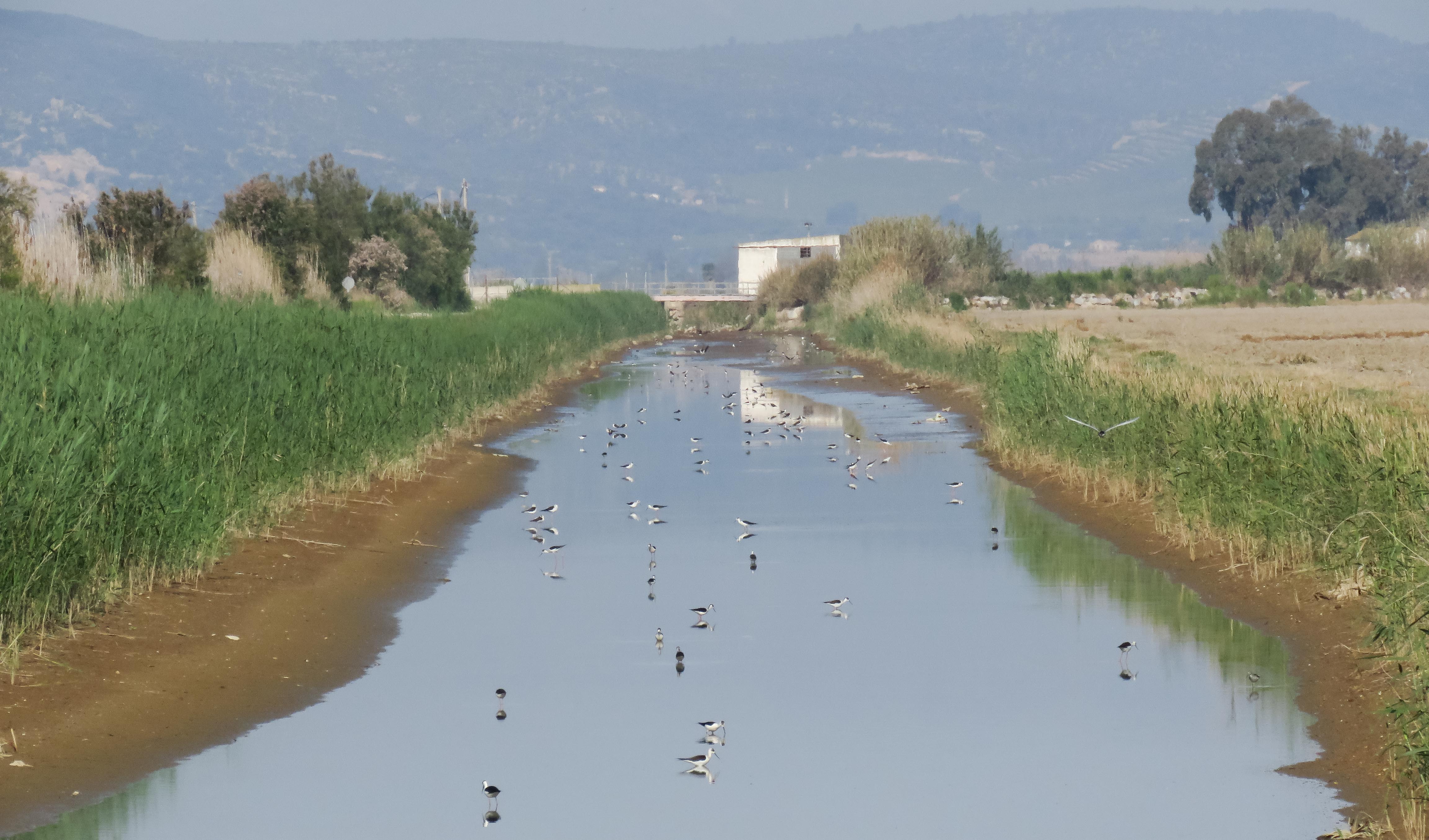
Great Reed Warbler, Greater Flamingo, Yellow Wagtails & Black-winged Stilts.

Whiskered Terns.
21st April. Delta de l’Ebre: Bassa de la Tancada, Reserva Natural Riet Vell, Eucaliptus & El Violí.
We were out before dawn everyday and started our second day at Bassa de la Tancada. We had our first views of Hoopoes (including singing individuals)- a species which was to become a daily occurrence on our trip. 30+ Collared Pratincoles flew overhead, with a few individuals landing close by, whilst we enjoyed great views of 7 Kentish Plovers and plenty of Little Stints. We also enjoyed 10 Mediterranean Short-toed Larks feeding in a ploughed field.




Hoopoe, Kentish Plover, Mediterranean Short-toed Lark & Purple Herons.
Collared Pratincoles.
We also visited Reserva Natural Riet Vell for the first (of many) Woodchat Shrikes, 3 summer-plumage Spotted Redshanks as well as at least 4 Pied Flycatchers. Pied Flycatchers were very abundant and we saw at least 100 individuals over the week!

Little Bittern, Swallow & Pied Flycatcher.
In the small woodland at Eucaliptus, we finally nailed a Spotless Starling (after only distant flight views previously) and had a roosting Long-eared Owl and flyover Osprey. In the evening at El Violí we had incredible views of Gull-billed Terns, 2 hunting Short-toed Eagle (including one individual sat in a field with prey) and both a light-morph and dark-morph Booted Eagle.




Long-eared Owl, Gull-billed Tern, Purple Swamphen & Short-toed Eagle.
22nd April. Mas de Melons, Lleida.
With a 04:30am start, we headed an hour and half north to the southern end of Mas de Melons near Lleida. En route we briefly stopped at a random picnic stop which ended up being a great decision as 2 Nightingales, a Melodious Warbler, a Western Bonelli’s Warbler and numerous Serins and Corn Buntings were singing as it started to get light.

Mas de Melons.
The Mas de Melons is predominantly steppe habitat interspersed with mixed woodland and groves of small walnut and other fruit trees. Some of the reserve is accessible by car via rough dirt tracks but we decided to park up and head out on foot. We had an incredible days birding with 8 Western Black-eared Wheatear (6 males; 2 females), ~30 Thekla’s Larks, 5 Woodchat Shrikes, ~15 Red-rumped Swallows, 5 Alpine Swifts, 1 Tawny Pipit, 1 Iberian Grey Shrike, 1 Golden Eagle, 1 Goshawk as well as Sardinian Warblers, Bee-eaters and Rock Sparrows. The undoubted highlight were 4 Western Orphean Warblers, one of our most-wanted species, singing and feeding in a walnut tree.
Western Black-eared Wheatears.




Sardinian Warbler, Thekla’s Lark, Woodchat Shrike & Spotless Starlings in Mas de Melons.
23rd April. Mas de Bunyol and Els Ports mountains.
For our third full day, we headed east to the Observatorio de aves Mas de Bunyol; the home of the “Buitreman” (Vulture man). Everyday for 30 years, José Ramón Moragrega has been feeding between 200-300 Griffon Vultures. The observatory’s primary focus is the conservation of vultures through supplementary feeding since changes in farming policy means all farm animal carcasses, the vulture’s natural food, had to be removed from the mountains for fear of mad-cow disease. They also hope to change the negative public image of scavenging birds.

Griffon Vultures.
We had incredible views of ~250 Griffon vultures dropping out the sky and coming in to feed- some mere metres away. After most of the 200kg (!) of food had been eaten, Dante spotted an Egyptian Vulture patrolling the feeding ground. It landed among the remaining Griffons and started picking at the bones; it was such a privilege seeing an adult of this endangered species up close.
Griffon Vultures & Egyptian Vulture.
After the vulture feeding, we spent the rest of the day birding the woodland around Mas de Bunyol with 10+ Western Bonelli’s Warblers, 5 Cirl Buntings, Firecrest and Short-toed Treecreeper. As we left, we were debating where we could stop on the way home through Els Ports mountains to hopefully see some Crag Martins when 2 flew right over the car on the main road. Luckily, we could pull off soon after and had brilliant views of 3 individuals over our heads (and they proved very difficult to photograph).

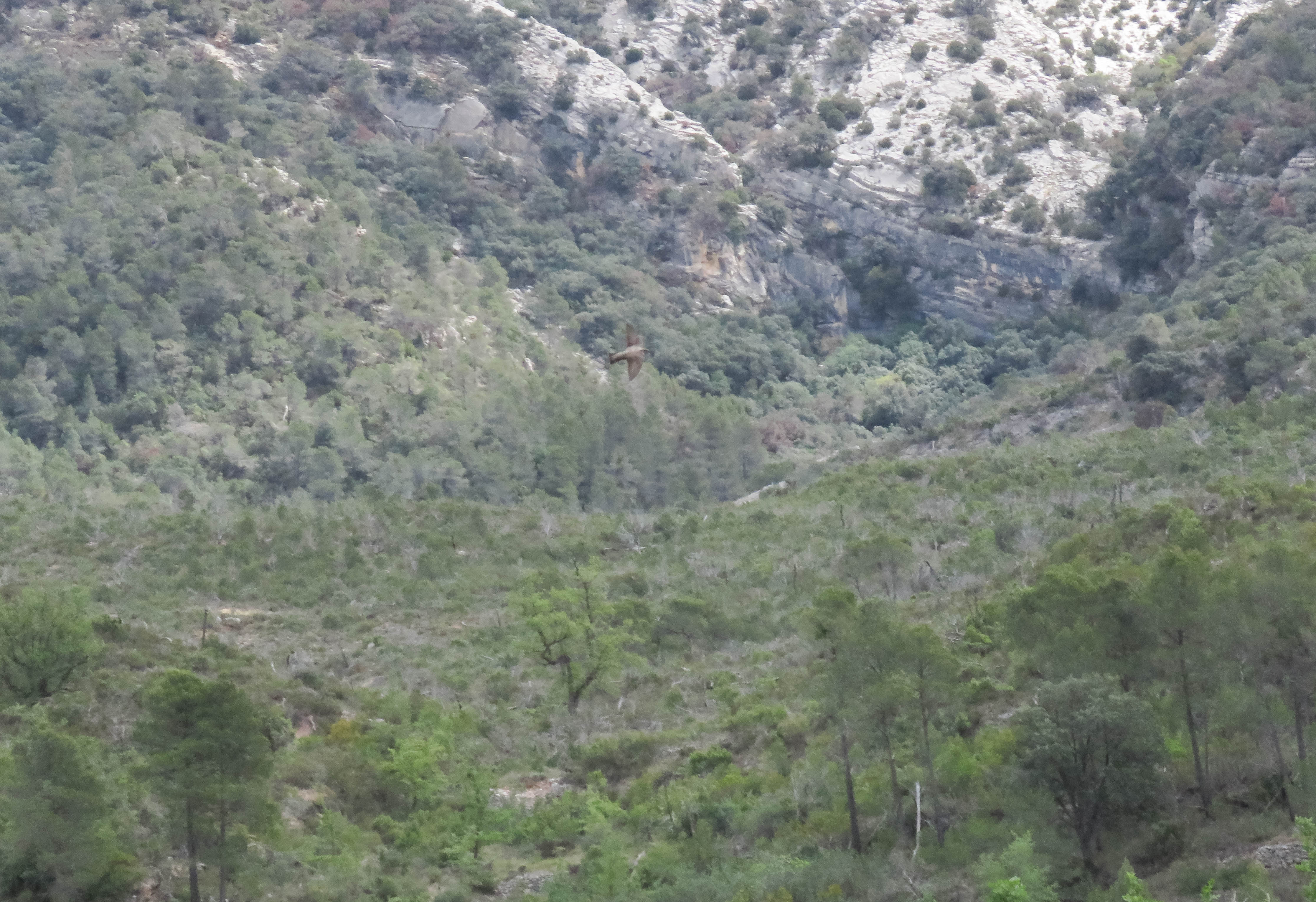
Western Bonelli’s Warbler & Crag Martin.
We spent the evening back in the Delta at La Tancada, with Audouin’s and Slender-billed Gulls and 50+ Wood Sandpipers and Little Stints. The best part was a mixed tern flock ranging from the littlest to the largest; Little Terns, Common Terns, Sandwich Terns and 5 Caspian Terns! We ended the day with an adult female Montagu’s Harrier hunting over el Clot.

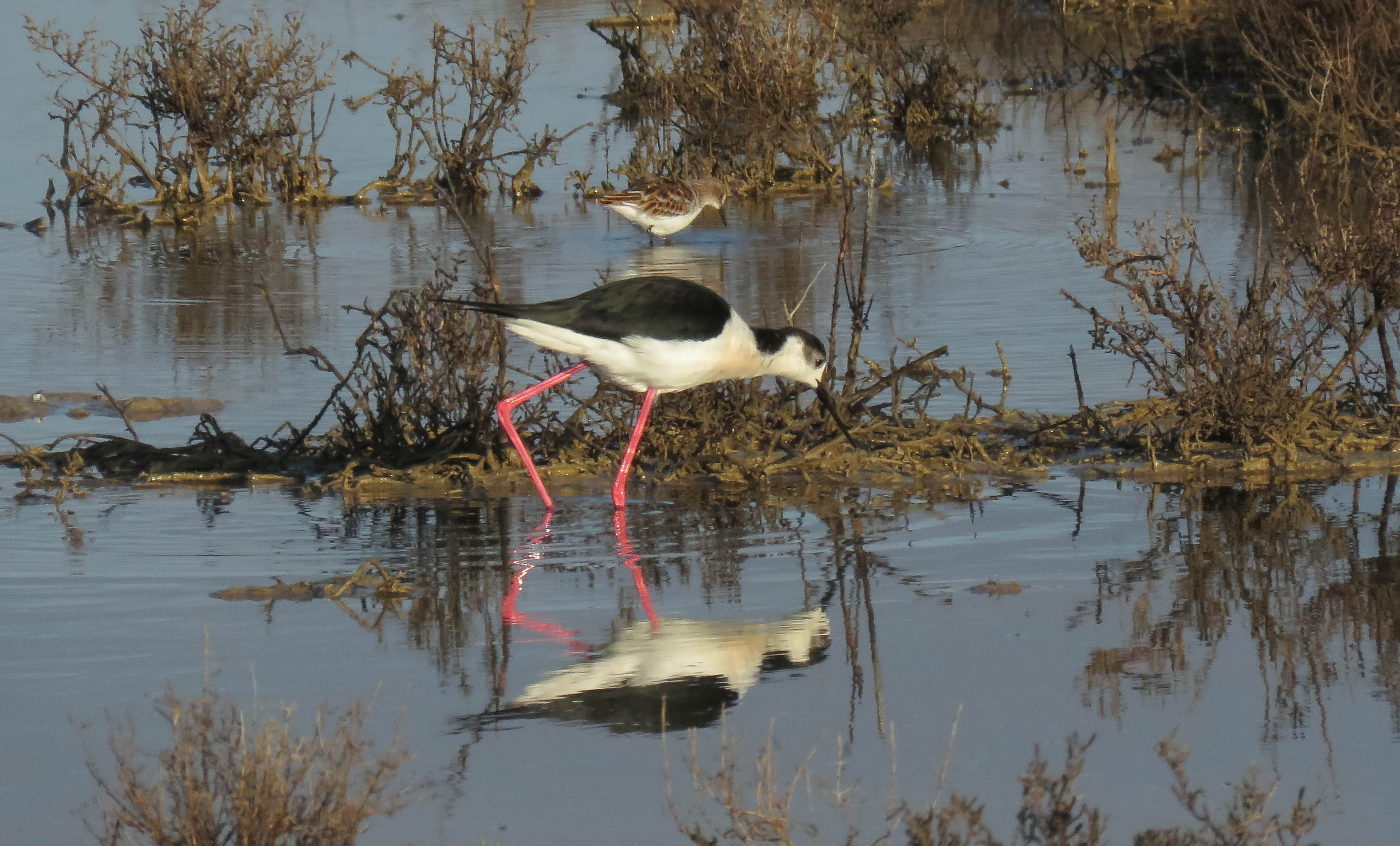
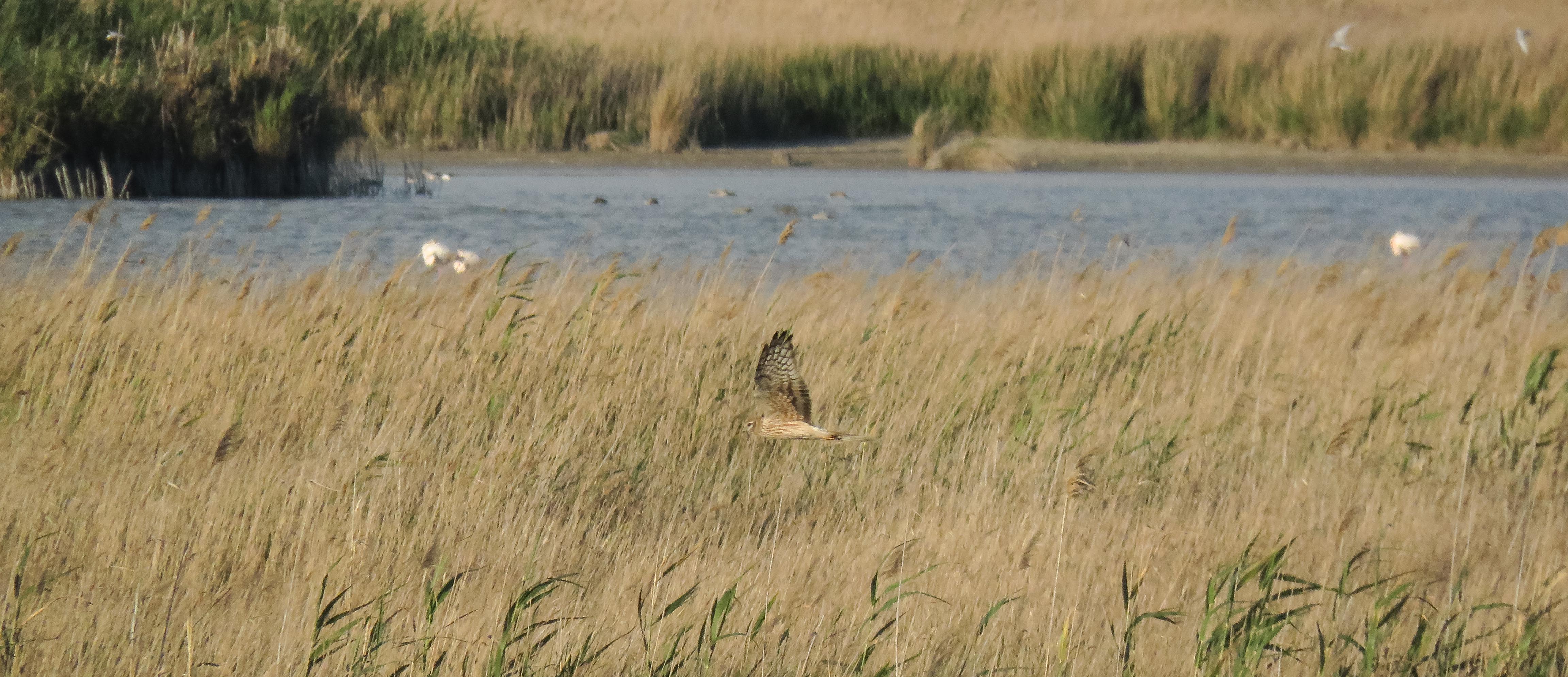

Little Stints, Black-winged Stilt, Montagu’s Harrier & Slender-billed Gulls.
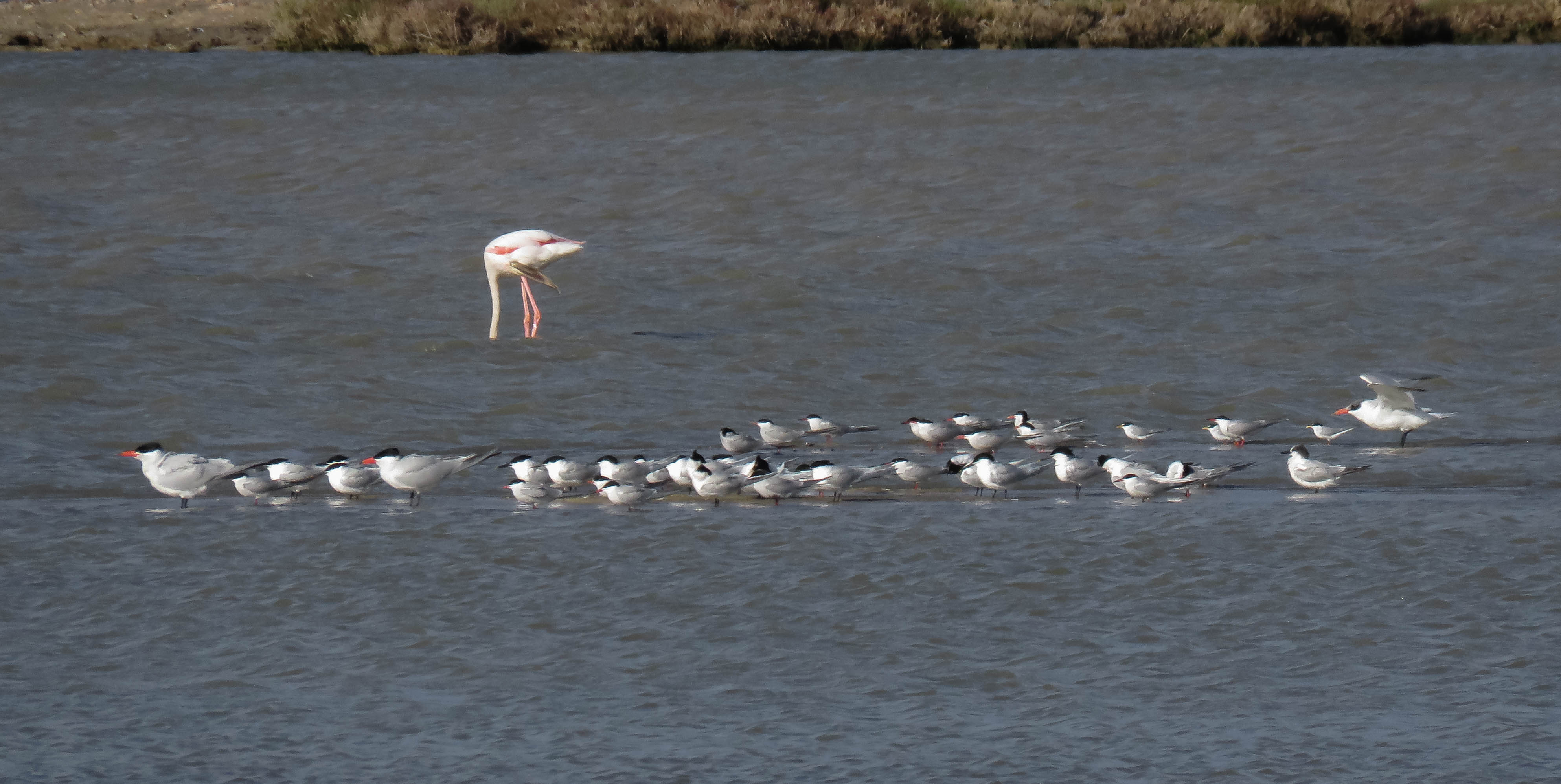
Caspian, Sandwich, Common & Little Terns.
24th April. Delta de l’Ebre: El Violí, Reserva Natural Riet Vell, Bassa de les olles & l’Embut.
Another Delta day which we started at sunrise at El Violí. As well as the usual species, we had brief but excellent views of 2 Marsh Sandpipers overhead, finally a Squacco Heron on the deck and another pale-morph Booted Eagle.


Purple Swamphen & Audouin’s Gull.
Riet Vell was, again, full of migrants including 5 Curlew Sandpipers, a Spotted Flycatcher and male Redstart. In the afternoon, we explored Bassa de les olles and the northern part of the Delta. It was quieter bird-wise than the southern section until we reached the sandy scrub at the edge of the beach. Suddenly, an Ortolan Bunting flew from the ground and gave us incredible views feeding down to a few metres. We then chanced upon a huge pulse of Common Swifts with an estimated 2000 moving northwest within about 20 minutes.
Ortolan Bunting.
Back in l’Embut for the evening; a dark-morph male Marsh Harrier and seeing a Penduline Tit trying to build a nest in a tree were definite highlights. An isolated clump of trees held a Tree Pipit and, on closer inspection, was clearly used as a Night Heron day roost. At least 50 2cy and adults were perched inside and flew out into the reeds as the light was fading.


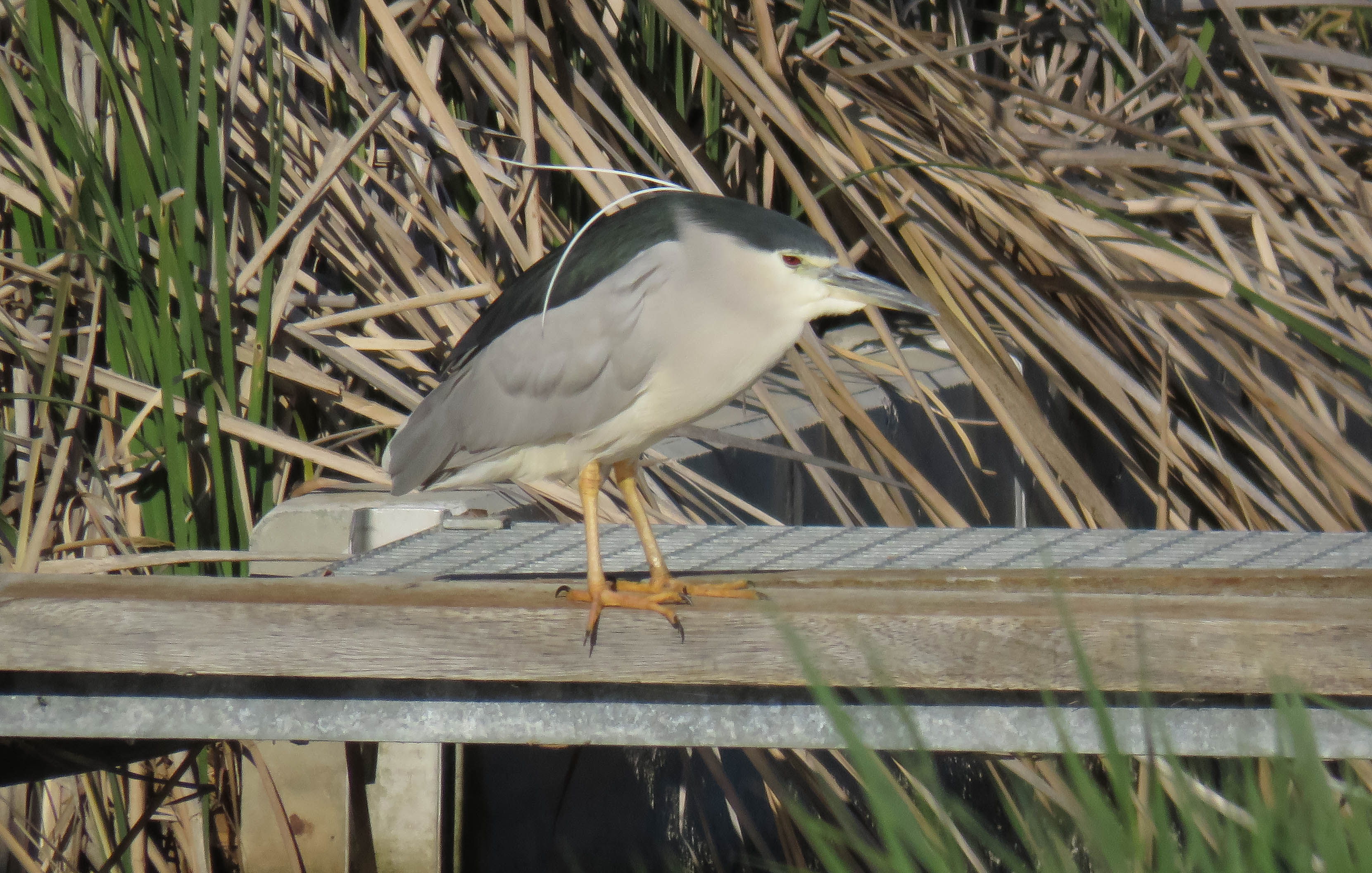

Marsh Harrier, Penduline Tit & Black-crowned Night Herons.
25th April. Timondea d’Alfés & Mas de Matxerri.
I think my favourite day of the whole trip was the one we spent at Timoneda d’Alfés. Close to Mas de Melons, Timoneda d’Alfés is a rare example of dryland agricultural habitat and steppe. I believe it is also the only known breeding ground of Dupont’s Lark in Catalonia although we didn’t see or hear any that day. Just as we turned off the main road, I spotted a single bird flying with rapid, shallow wing beats- a flight style like nothing I’d ever seen before. We quickly realised it was a Little Bustard which was rapidly joined by another male, both of which were close enough we could hear their whirring wings!
Little Bustards.
After this excellent start, we again decided to park up and walk around the reserve. The whole area was full of singing Calandra Larks and Greater Short-toed Larks as well as circling Black Kites, Griffon Vultures and White Storks. We had excellent views of Stone Curlew, Iberian Green Woodpecker and much improved views of 2 Iberian Grey Shrikes.
Calandra Larks.


Iberian Grey Shrike & Greater Short-toed Lark.
Undoubtedly, my favourite birds of the day, and my most-wanted for the whole trip, were the Pin-tailed Sandgrouse. We first picked up a flock of 4 on call which disappeared into the centre of a huge field- unfortunately, an inaccessible part of the reserve. We sprinted to the edge of the field and waited hoping they might reappear. Then another individual flew over, followed by another group of 4 which Dante had picked out far away, flying in from the Lleida direction. This last group flew right overhead and gave exceptional views of their gold-spangled upperparts and breast bands. What incredible birds and a whole new family for both of us! We also had our first singing Golden Oriole of the trip, another Alpine Swift, Short-toed Eagle and 20+ Bee-eaters.
Pin-tailed Sandgrouse.
We decided to briefly stop at Mas de Matxerri (the northern section of Mas de Melons) before driving south. Dante had brief views of an adult male Montagu’s Harrier which I unfortunately missed as I was getting out the car. As well as more Northern and Black-eared Wheatears, we had a pair of Golden Eagles and a singing male Western Subalpine Warbler in a walnut grove.
26th April. Delta de l’Ebre: l’Embut, Eucaliptus, Platja de l’Alfacada & El Sifó.
A few sparse trees around l’Embut at sunrise produced 1 Redstart, 1 Western Subalpine Warbler, 5 Garden Warblers, 2 Common Whitethroats, 10 Willow Warblers, 3 Pied Flycatchers and 1 Spotted Flycatcher. Also, excellent views of 23 feeding Temminck’s Stints, another Little Bittern and 12 singing Savi’s Warblers- a species we’d heard plenty but hadn’t managed to see previously in the wind. We then headed to Eucaliptus where we had 8 Golden Orioles (of all ages), 2 Western Subalpine Warbler, 5 Nightingales, another Ortolan Bunting and Tawny Pipit. Throughout the morning we also counted at least 40 Turtle Doves (including one flock of 23) which was pretty special considering the state of the species in the UK.
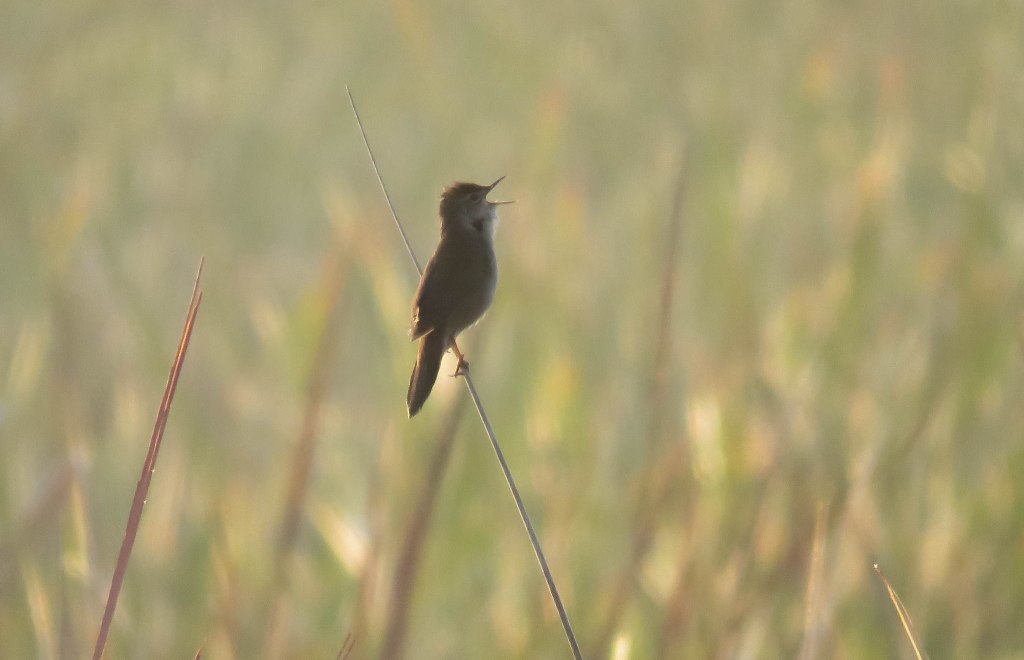

Savi’s Warbler & Tawny Pipit.

Turtle Doves.
Late afternoon, we headed to Platja de l’Alfacada which is a narrow row of scrub and small trees alongside a ditch at the edge of the beach. It was absolutely alive with migrants; within a few hundred metres we had at least 25 Willow Warblers, 1 Reed Warbler, 4 Common Whitethroats, 1 Western Subalpine Warbler, 4 Woodchat Shrike, 4 Redstart, 1 Ortolan Bunting and 1 Corn Bunting. Since it was a still evening, we headed to El Sifó in the hope of hearing a Eurasian Scops Owl which had been seen the previous evening. We got really lucky and heard two individuals calling to each other and caught a glimpse of one as it flew across a canal. Well worth being eaten alive by mosquitoes!

Scrub at Platja de l’Alfacada.
27th April. El Argilers. Delta de l’Ebre: Platja de l’Alfacada & Punta de la Banya.
We started our final day at El Argilers- an abandoned quarry near L’Ampolla and a known site for Blue Rock Thrush. It took us a long time to find any in the huge quarry, but we finally had brief views of a presumed breeding pair (including a stunning blue adult male) and excellent views of two females. Whilst searching for the thrushes, we also enjoyed breeding Bee-eaters, Booted Eagle, Grasshopper Warbler and a random Purple Heron.
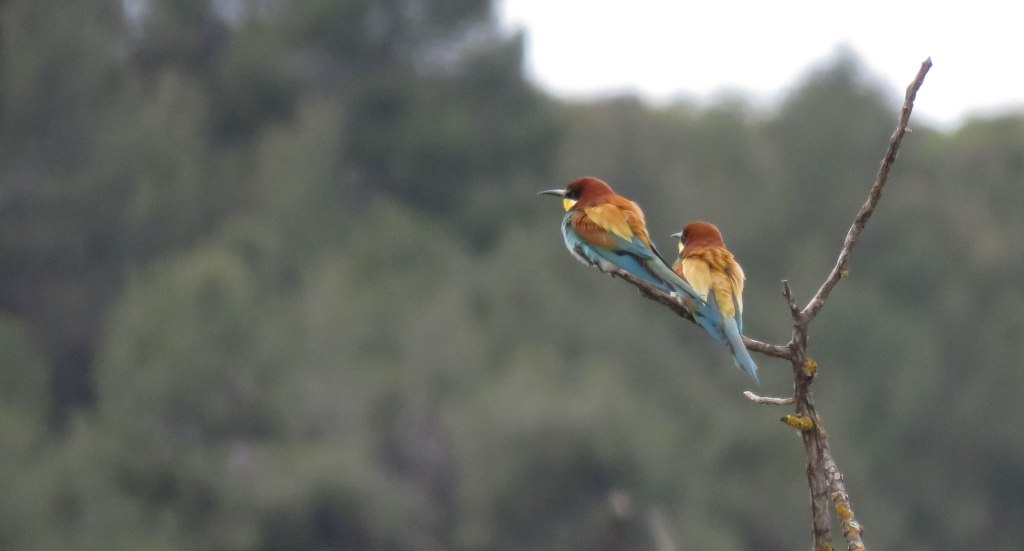



Bee-eaters, Purple Heron, Red-rumped Swallow & Booted Eagle.
After such a great evening the day before, we decided to again walk the coast of Platja de l’Alfacada to check for migrants. There was clearly a turnover of birds and this time the sparse row of bushes and sandy ditch held 3 Tawny Pipits (including a singing individual), 12 Northern Wheatear, 2 Whinchat, 3 Redstart, 3 Woodchat Shrikes, 1 Melodious Warbler, 4 Western Subalpine Warblers and 1 Wryneck- the first of our trip.

Western Subalpine Warbler.
Late afternoon, we headed to Punta de la Banya- a small group of isolated bushes in the middle of a busy beach car park which forms an absolute migrant hotspot! This small group of bushes contained 1 Woodchat Shrike, 1 Common Whitethroat, 1 Western Subalpine Warbler, 1 Melodious Warbler, 2 Willow Warblers and best of all, 2 Western Orphean Warblers! When we’d left Mas de Maxterri earlier in the week, we thought we wouldn’t see this species again and so to find two individuals in a migrant-context was absolutely fantastic- the perfect way to end the week.
Western Orphean Warbler.
28th April. Travel home to North Wales.
Sad to be leaving, we were up early to clean the hire car of the incredible amount of dust it collected in the Delta, head to the airport and fly home.


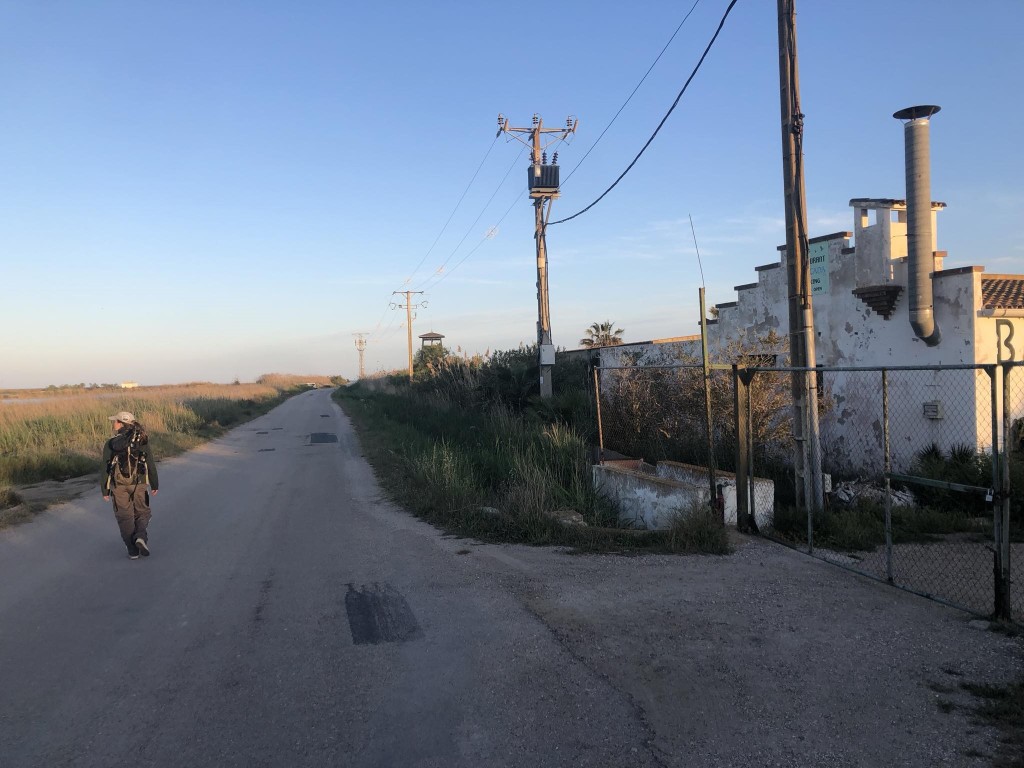

El Violí, Sand Martins & Whiskered Tern with Gull-billed Terns.
Trip list:
- Shelduck
- Mallard
- Gadwall
- Shoveler
- Red-crested Pochard
- Red-legged Partridge
- Little Grebe
- Great-crested Grebe
- Great Cormorant
- Little Bittern
- Black-crowned Night Heron
- Cattle Egret
- Squacco Heron
- Little Egret
- Great White Egret
- Grey Heron
- Purple Heron
- White Stork
- Glossy Ibis
- Eurasian Spoonbill
- Greater Flamingo
- Griffon Vulture
- Egyptian Vulture
- Golden Eagle
- Short-toed Snake Eagle
- Booted Eagle
- Osprey
- Red Kite
- Black Kite
- Marsh Harrier
- Montagu’s Harrier
- Common Buzzard
- Goshawk
- Common Kestrel
- Water Rail
- Common Moorhen
- Eurasian Coot
- Purple Swamphen
- Little Bustard
- Avocet
- Black-winged Stilt
- Stone Curlew
- Collared Pratincole
- Little Ringed Plover
- Common Ringed Plover
- Kentish Plover
- Grey Plover
- European Golden Plover
- Ruff
- Turnstone
- Dunlin
- Curlew Sandpiper
- Temminck’s Stint
- Little Stint
- Wood Sandpiper
- Green Sandpiper
- Common Sandpiper
- Common Redshank
- Spotted Redshank
- Common Greenshank
- Marsh Sandpiper
- Black-tailed Godwit
- Whimbrel
- Common Snipe
- Black-headed Gull
- Slender-billed Gull
- Mediterranean Gull
- Yellow-legged Gull
- Audouin’s Gull
- Lesser Black-backed Gull
- Caspian Tern
- Sandwich Tern
- Gull-billed Tern
- Common Tern
- Little Tern
- Whiskered Tern
- Pin-tailed Sandgrouse
- Feral Pigeon
- Stock Dove
- Woodpigeon
- Collared Dove
- Turtle Dove
- Long-eared Owl
- Eurasian Scops Owl
- Common Swift
- Alpine Swift
- European Bee-eater
- Hoopoe
- Iberian Green Woodpecker
- Great Spotted Woodpecker
- Wryneck
- Crested Lark
- Thekla’s Lark
- Woodlark
- Greater Short-toed Lark
- Mediterranean Short-toed Lark
- Calandra Lark
- Sand Martin
- Crag Martin
- Barn Swallow
- Red-rumped Swallow
- House Martin
- Tawny Pipit
- Tree Pipit
- Red-throated Pipit
- White Wagtail
- Yellow Wagtail (ssp. flava, thunbergi, cinerocapilla, iberiae)
- Robin
- Common Nightingale
- Common Redstart
- Whinchat
- Stonechat
- Mistle Thrush
- Blackbird
- Blue Rock Thrush
- Northern Wheatear
- Western Black-eared Wheatear
- Zitting Cisticola
- Garden Warbler
- Blackcap
- Common Whitethroat
- Western Orphean Warbler
- Sardinian Warbler
- Western Subalpine Warbler
- Sedge Warbler
- Cetti’s Warbler
- Reed Warbler
- Great Reed Warbler
- Grasshopper Warbler
- Savi’s Warbler
- Melodious Warbler
- Willow Warbler
- Western Bonelli’s Warbler
- Chiffchaff
- Firecrest
- Spotted Flycatcher
- Pied Flycatcher
- Great Tit
- Blue Tit
- Long-tailed Tit
- Penduline Tit
- Nuthatch
- Short-toed Treecreeper
- Iberian Grey Shrike
- Woodchat Shrike
- Magpie
- Jay
- Jackdaw
- Red-billed Chough
- Carrion Crow
- Raven
- Common Starling
- Spotless Starling
- Golden Oriole
- House Sparrow
- Tree Sparrow
- Rock Sparrow
- Chaffinch
- Linnet
- Goldfinch
- Greenfinch
- Serin
- Ortolan Bunting
- Cirl Bunting
- Corn Bunting
Species missed:
- Lesser Kestrel: A few probable females seen at Timondea d’Alfés but individuals were always distant and so we didn’t want to ‘tick’ this new species based on unsatisfactory views.
- Black Tern: Annual in Delta de l’Ebre. One individual was seen at El Violí a week prior to our arrival but not, unfortunately, during our visit.
- Great Spotted Cuckoo: Breeding in or near Timondea d’Alfés, we’d hoped to see one on our day trip there but unfortunately, didn’t get lucky.
- Common Rock Thrush: A high altitude species for which we struggled to find any reliable sites either this early in the year or, that didn’t involve a drive to the Pyrénees.
- Black Wheatear: A resident, localised breeder sporadically reported from Mas de Melons. We didn’t see any during our two visits to the Mas de Melons and we suspect they’re in specific sites which we just didn’t know about.
- Moustached Warbler: We checked the known hotspot at El Violí numerous times (including early morning) hoping for a singing individual. Potentially this species is easier to see during the winter?
- Spectacled Warbler: Another species reported from Mas de Melons. We checked plenty of dry scrub on our visit but unfortunately no luck.
- European Roller: An annual migrant through Delta de l’Ebre and Lleida steppe with late April/early May being the best time of year to see this species on passage. None were reported anywhere in the Delta during our visit.
